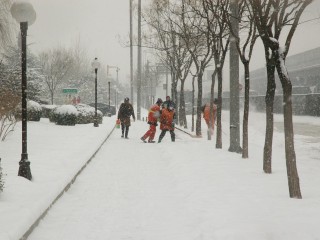Material Facts:
This case revolved around a plaintiff, Barry O’Brien, who brought an action for damages as a result of a motor vehicle accident which occurred on October 14, 2010. At the conclusion of trial, a jury awarded Mr. O’Brien general damages in the amount of $50,000, damages for past loss of income in the amount of $30,000 and damages for future care costs of $6,114. No damages were awarded for future loss of income, a head of damage the plaintiff claimed for. Subsequent to the jury trial, the Defence brought a threshold motion for a declaration that the plaintiff’s injuries did not satisfy the tests provided for in s. 267.5(5) of the Insurance Act and the applicable regulations.
Issues:
The court was asked to consider whether the plaintiff met the threshold requirements under the Insurance Act. In order to do so, it was noted that caselaw had established that the following questions must be asked:
- Has the injured person sustained permanent impairment of a psychical, mental, or psychological function?
- If yes, is the function which is permanently impaired an important one?
- If the answer to question 2 is yes, is the impairment of the important bodily function serious?
Ratio:
The Court came to the conclusion that the plaintiff met threshold. The court dismissed the defence’s motion.
Analysis:
It is useful to review some relevant facts in this case. The force of the motor vehicle accident was deemed severe and the plaintiff’s left leg was pinned inside of the vehicle at the time of the accident. Following the accident, the plaintiff underwent surgery for a “pilon” fracture of his left ankle. Despite this, in addition to other injuries sustained in the accident, the plaintiff had been able to exceed recovery timetables and had returned to his employment 9-10 months after the accident. It was noted that while the plaintiff had been able to return to work, it was not without difficulty. The plaintiff had struggled with his ankle at work and had been slower and needed more time to stop and rest. The presiding judge had no difficulty in determining that the plaintiff had a permanent impairment of an important function with regards to the left ankle injury sustained in the accident.
What was at issue was whether or not the impairment substantially interfered with the plaintiff’s ability to continue his regular employment despite reasonable efforts to accommodate the impairment or whether it substantially interfered with most of his usual activities of daily living. It was determined that the plaintiff had returned to the majority of his activities of daily living subsequent to the accident. However, the presiding judge determined that the plaintiff did sustain a permanent serious impairment in relation to his employment. This was despite the fact that the Plaintiff returned to work fulltime since the accident.
Of significant note was the issue regarding whether a future inability to continue in his regular occupation can properly be taken into account for a threshold motion. Defence counsel argued that this cannot be taken into account and that the impairment must crystallize at least by the time of trial and relief on section 4.2 (3) of Regulation 461/96. It was noted that neither counsel provided authority on this issue of future inability to continue in regular occupation. The presiding judge failed to see any provision within the Regulations which would restrict the court’s consideration of evidence relating to a plaintiff’s prognosis for future events which are likely to occur. It was determined that the court is entitled to consider all of the evidence including evidence related to the plaintiff’s future impairment with respect to employment. Through testimony, multiple doctors were of the opinion that the plaintiff would not be able to continue in his current laboring job and would be forced to retire early from that hard laboring job or transition to a low demand occupation.
The case at the bar is authority for the principle that these future occupation prospects can be considered when viewing threshold from an employment perspective. Additionally, the judge noted that despite the jury not awarding any damages for future loss of income, this did not persuade him from coming to the conclusion that the plaintiff’s employment prospects were unaffected as a result of the accident.
Trial/Motion Decision:
As noted, the presiding Judge came to the conclusion that the plaintiff met threshold with respect to his employment activities. The defence’s motion was dismissed with costs to be determined in 30 days for the whole action if not agreed upon by counsel.











